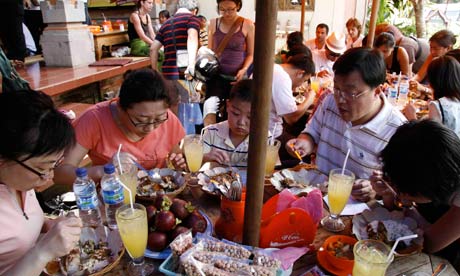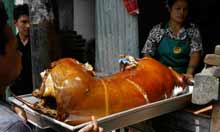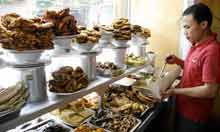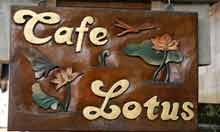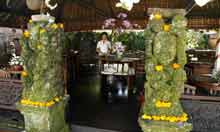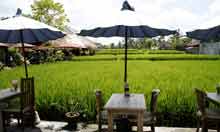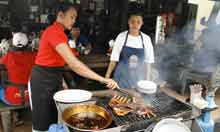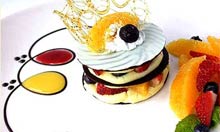Mencicipi makanan khas Korea membuat saya tergoda untuk kembali
menikmatinya terus menerus. Sebelumnya saya sudah pernah membuat
postingan mengenai makanan Korea.
Di dalam postingan saya sebelumnya itu, hanya terdapat 3 jenis
makanan Korea yang enak. Karena postingan itu saya bikin untuk mengikuti
kontes PEMILIHAN TOUCH KOREA TOUR PENGALAMAN TIM EVENT yang
diselenggarakan oleh facebook Korea Tourism Organization (Indonesia) dan
twitter @KTOJakarta, walaupun akhirnya gak kepilih jadi pemenang, tapi
tetap semangat kok.
Ketiga jenis makanan Korea tersebut antara lain adalah Kimchi,
Samgyetang dan Kue Tradisional Tteok. Padahal selain ketiga makanan
tersebut, ada banyak lagi makanan Korea yang enak menurut saya.
Kebanyakan makanan Korea yang enak itu saya liat gambar atau videonya di
internet. Saya ingin sekali dapat mencoba bagaimana rasanya.
Misalnya untuk makanan berkuah atau sup, saya ingin mencoba
Seolleongtang, Jeongol dan Jjampong. Seolleongtang dan Jeongol merupakan
sup berkuah khas Korea, sedangkan Jjampong adalah mie kuah Korea
Selatan dan Naengmyeon adalah mie kuah Korea Utara.
Sup Seolleongtang
 |
| Sup Seolleongtang |
Seolleongtang adalah sup yang sangat populer di Korea. Kadang,
masakan ini menjadi satu-satunya menu yang sengaja disediakan oleh
banyak restoran korea. Bahan masakan yang satu ini terbuat dari sup
kaldu tulang sapi yang direbus dalam waktu lama. Biasanya masak sup ini
membutuhkan waktu berjam-jam lamanya agar kalsium yang ada terlepas
sampai tulangnya berwarna putih khas. Untuk itu Seolleongtang adalah
masakan korea yang paling lama waktu memasaknya.
Biasanya dalam menu sup Seolleongtang juga ada juga potongan
daging sapi dan lobak. Bayangkan bagaimana enaknya sup kaldu tulang sapi
dengan potongan daging sapi dan lobak di dalamnya, pasti rasanya
nikmat, apalagi disajikan dalam keadaan hangat dan pedas sesuai dengan
selera saya, hmm, nyummyyyy..
Sup Jeongol
 |
| Sup Jeongol |
Selanjutnya adalah Jeongol, sup
yang dahulu kala hanya dibuat untuk kalangan bangsawan atau keluarga
kerajaan di Korea. Sup Jeongol memiliki rasa yang enak dan beragam,
karena biasanya di dalam menu terdapat irisan daging sapi, berbagai
jenis makanan laut (seafood), berbagai jenis sayuran serta bumbu
penyedap lainnya yang direbus secara bersamaan dalam sebuah panci besar.
Sup Jeongol ini sangat cocok untuk saya, karena saat direbus
ditambahkan bumbu gochujang dan bubuk cabai lainnya agar menambah rasa
pedas. Gochujang adalah pasta cabai yang sering digunakan dalam berbagai
masakan Korea. Oh betapa cocoknya untuk saya yang merupakan seorang
penggemar makanan pedas ya.
Jjampong
 |
| Jjampong |
Kemudian masakan Korea yang enak
lainnya adalah Jjampong, mie kuah Korea yang menggunakan campuran
seafood, daging sapi dan sayuran. Mie nya sendiri terbuat dari tepung
gandum. Biasanya dalam memasak Jjampong, sering ditambahkan bawang dan
minyak cabai. Karena Jjampong terkenal sebagai mie kuah yang pedas.
Pendapat saya mengenai mie yang satu ini perfect banget, sebagai
seorang pecinta makanan pedas, apalagi mie ya, maka Jjampong ini sangat
sempurna. Ditambah paduan rasa seafood dan daging sapi dengan kuah
pedasnya, pas dimakan, ohh rasanya gimana gitu, nggak kebayang. Jjampong
ini pengen banget saya cari dan saya coba. Ada nggak ya di Indonesia?
Khususnya di Jakarta, hehehe…
Bingsu
 |
| Bingsu |
Untuk dessertnya, saya ingin mencoba mencicipi bingsu dan omija cha. Bingsu adalah dessert
khas Korea yang sangat digemari, terutama pada hari-hari musim panas
yang terik. Makanan ringan ini pertama kali dikenal sebagai es serut
kacang merah manis yang dijual di pedagang kaki lima.
Kini bingsu tersedia dalam banyak rasa dengan variasi tambahan es
krim, yogurt dingin, susu kental manis, sirup dan buah-buahan seperti
strawberry, pisang, kue beras tteok, agar-agar dan sereal. Beberapa rasa
yang menjadi unggulan dari bingsu adalah kopi, teh hijau, pinkberry dan
mangga.
Omija Cha
 |
| Omija Cha |
Setelah bingsu, minuman pencuci mulut yang segar adalah omija cha
atau teh buah omija. Yang unik dari teh ini adalah memiliki 5 rasa buah
omija, yaitu manis, asam, asin, pahit dan pedas dalam berry.
Di Korea, berry ini biasanya dijadikan teh yang
dapat dikonsumsi secara langsung atau dicampur dengan madu, kelopak
bunga, bubuk kacang hijau, dan lainnya. Omija juga digunakan sebagai
penyedap untuk makgeolli. Untuk penggunaan sehari-hari, teh ini bagus
untuk saluran pernapasan, tetapi dalam hal obat tradisional, omija
sering digunakan untuk menyembuhkan hati atau liver.
Itulah berbagai makanan lainnya yang enak dan ingin sekali saya
cicipi. Sebenarnya sih pasti masih ada banyak lagi makanan Korea yang
menarik, tapi yang saya temukan paling oke ya baru beberapa di atas,
terutama jjampong ya. Kalo ada saran atau masukan lagi mengenai makanan
Korea, kasihtau ke saya ya, hehehe… Terima kasih banyak.
Source : wisata.kompasiana.com














